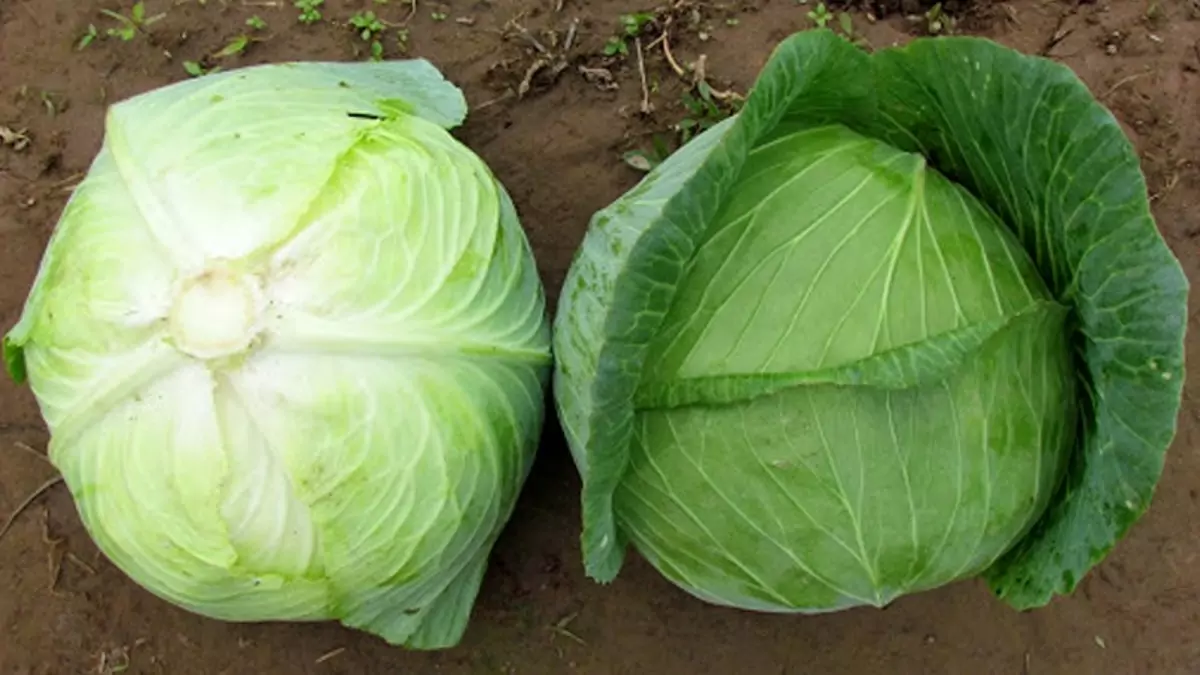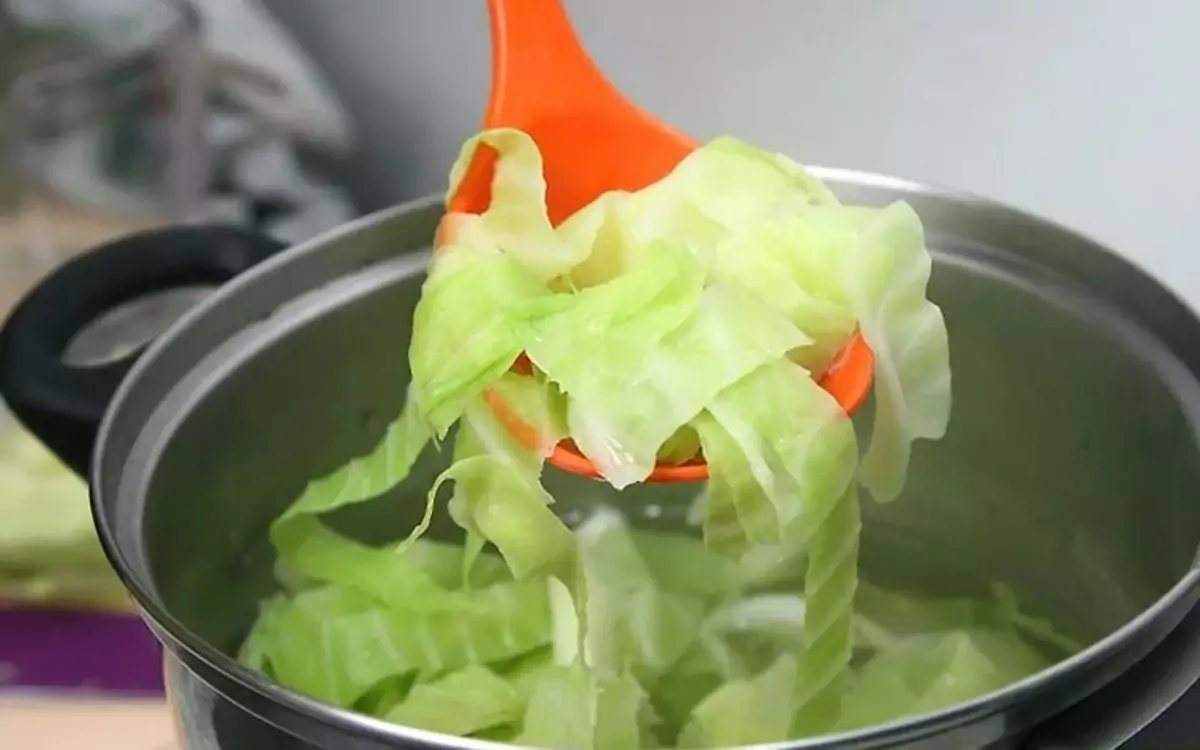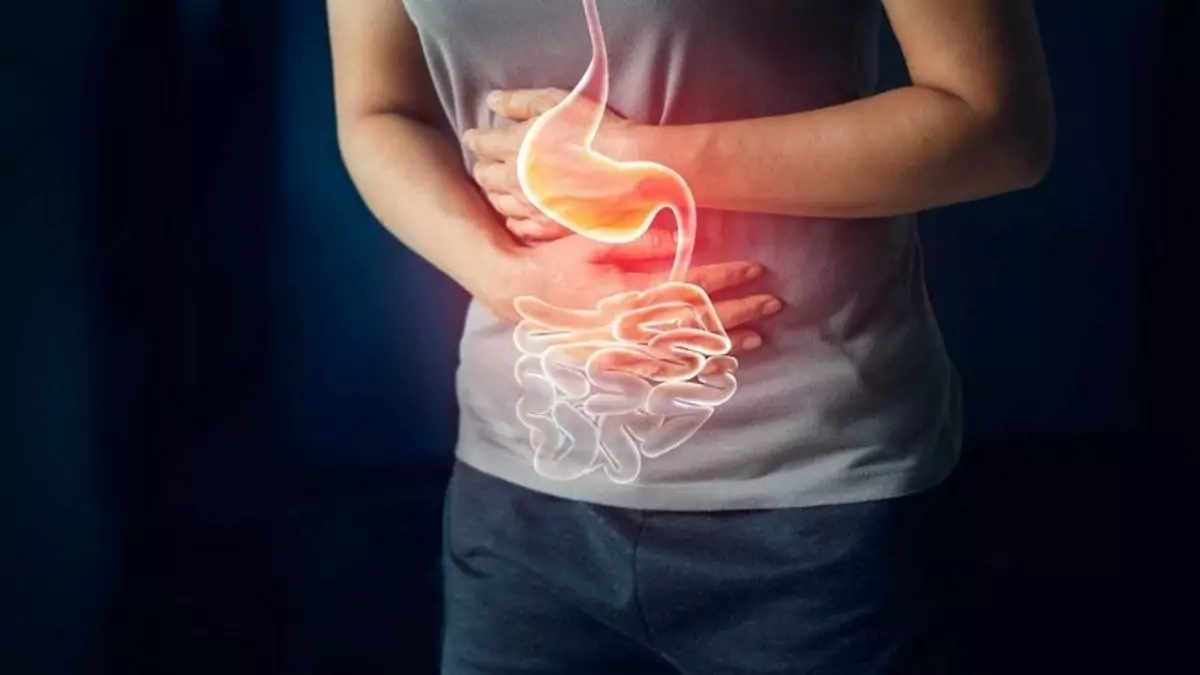Boiled cabbage is an easy-to-make, light dish that’s great for your health. For perfectly boiled cabbage, it should be crisp, fragrant, and vibrant green without falling apart. This article from Food Vietnamese will guide you on how to boil Vietnamese cabbage to retain all its nutrients.
Cabbage is considered one of the most nutritious, easy-to-eat, and healthful foods. There are many ways to prepare boiled cabbage, but the quickest method that preserves the most nutrients is boiling. The method for making Vietnamese boiled cabbage to keep it nutritious, crisp, and vibrant green is shared with you in the article below.
Tips for Choosing Fresh and Delicious Cabbage
Here are some tips to remember when selecting fresh and tasty cabbage:
- Look for a uniformly round shape with a slightly dark green or purple color, depending on the variety.
- Avoid cabbages that are flat or oval-shaped, especially those with a pale white color, as they are often old, fibrous, tough, and not tasty.
- The weight should feel neither too heavy nor too light.
- Choose a size that fits comfortably in your hand.

Traditional Vietnamese Boiled Cabbage
Prepare the cabbage and a piece of ginger, then follow these steps:
Preparing the Cabbage
- Peel off the outer layers of the cabbage and discard any bruised, wilted, or insect-damaged leaves.
- Rinse the cabbage under running water to remove any dirt on the leaves.
- Wash it again with diluted salt water, soak for 10 minutes, then rinse with clean water and let it drain.
- Cut the cabbage into bite-sized pieces or shred it. Be sure to remove the bottom stem and the tough veins in the middle of the cabbage leaves.
Boiling the Cabbage
- Take a large pot and fill it with an appropriate amount of water, adding half a teaspoon of vinegar. Bring the water to a boil over high heat.
- Add the cabbage to the pot, reduce the heat to low, and boil for 5 minutes for shredded cabbage or 15 minutes for square-cut pieces.
- Once the cabbage is cooked, turn off the heat.

Tips for Boiling Crunchy and Delicious Cabbage
Whether boiled cabbage turns out crunchy and tasty depends on how you boil it. Keep these tips in mind:
- Make sure the water is boiling before adding the cabbage; do not boil it when the water is still cold, as this will make the cabbage soft and mushy.
- Add a little lemon juice or salt to the boiling water to help preserve the cabbage’s green color.
- Once the cabbage is cooked, remove it and immediately immerse it in cold water to maintain its crunchiness.
What to Dip Boiled Cabbage In for Extra Flavor?
Boiled cabbage is already a light dish on its own, but there are ways to make your meal more exciting and delicious. To do this, dip the boiled cabbage in fish sauce with a mashed boiled chicken or duck egg. Here are some Vietnamese-style dipping options you can consider:
- Fish Sauce Dip: Prepare a small bowl of salty fish sauce, and you can add a bit of sugar, minced garlic, and chili if you like it spicy. Dipping cabbage in fish sauce adds a salty, appealing flavor that enhances the taste of the boiled cabbage.
- Boiled Egg: A boiled chicken or duck egg, cut into small pieces, pairs well with boiled cabbage. Eggs also provide additional protein and other nutrients to your meal. Combining cabbage with eggs creates a perfect choice in terms of both flavor and nutrition.

Nutritional Benefits of Eating Boiled Cabbage
Boiled cabbage, belonging to the cruciferous vegetable family, is highly nutritious. According to research, 100 grams of raw cabbage contains nutrients such as carbohydrates, protein, fiber, vitamin C, vitamin A, sugars, and various minerals like calcium and potassium. When you eat boiled cabbage, the nutrients remain intact, providing numerous benefits to the body, including:
- Boosting the immune system with abundant vitamin C, which acts as an antioxidant, prevents aging, reduces stress and fatigue, aids in iron absorption, and helps produce collagen for wound healing.
- Improving bone and joint health due to minerals like magnesium, calcium, and potassium, which protect bone health, prevent osteoporosis, and guard against bone degradation.
- Benefiting heart health with polyphenols and cellulose that have anti-inflammatory properties, prevent blood clot formation, lower blood pressure, and reduce bad cholesterol.
- Preventing cancers such as breast, colorectal, and lung cancer due to natural proteins found in cabbage.
- Managing weight, making it ideal for those looking to lose weight naturally, as 100 grams of boiled cabbage contains only about 27 calories and is rich in fiber.
- Detoxifying the body with antioxidants like vitamin A, vitamin C, and sulfur, which help eliminate free radicals that can damage cells, and abundant fiber that supports digestion and removes toxins accumulated in the intestinal walls.
- Benefiting brain function with anthocyanins and vitamin K, which influence concentration and psychological health, and prevent memory-related diseases and nerve damage.
- Improving vision with beta-carotene, which helps prevent macular degeneration and cataracts and enhances eye health.
- Regulating blood pressure thanks to anthocyanins, which effectively reduce vascular contraction and dilation, decrease pressure on the cardiovascular system, and lower blood pressure.
- Supporting the treatment of stomach ulcers due to anti-inflammatory compounds like glucosinolates.
- Benefiting fetal development as cabbage is a significant source of folic acid.
- The fiber in cabbage enhances digestive function, reduces constipation, promotes regular bowel movements, maintains gut health, and prevents intestinal ulcers.

I hope the above tips have helped you understand the detailed method for boiling Vietnamese cabbage. This cabbage dish can be dipped in salty fish sauce with a bit of spicy chili, enhancing the flavor of your meal. Visit Foodvietnamese.com daily for more authentic Vietnamese cooking tips!
